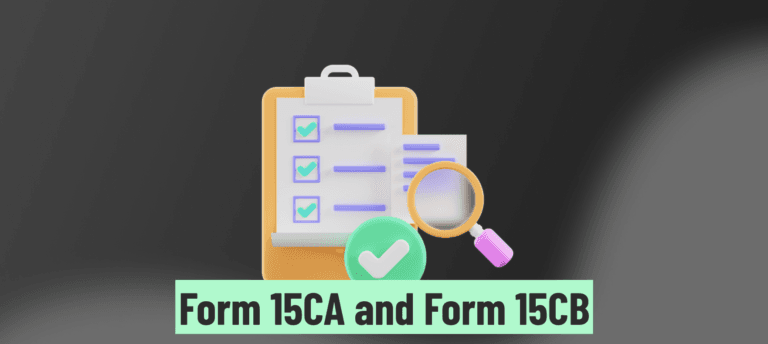The Personal Insolvency Resolution Process (PIRP) under the Insolvency and Bankruptcy Code (IBC) of India, 2016, is a unique mechanism that specifically addresses the financial distress of individual debtors, including partnership firms and proprietorships. Unlike the CIRP process, which is designed for companies, the PIRP is tailored to balance the interests of creditors of the corporate debtor, as well as that of the corporate debtor, thereby ensuring a structured resolution process. Here’s a comprehensive guide on the PIRP:
Objectives of PIRP
- Debt Resolution: To resolve the financial distress of individual debtors and ensure repayment to creditors in a fair and orderly manner.
- Fresh Start: To provide a fresh start to debtors burdened with unsustainable debt levels.
- Balance of Interests: Balance of the interests of the creditors as well as that of the debtors.
- Time-Bound Process: To ensure a quick resolution to avoid prolonged financial uncertainty.
Key Participants in PIRP
- Individual Debtor: The person undergoing the insolvency resolution process.
- Creditors: They may be individuals, or banks or corporate entities to whom money is owed by the corporate debtor.
- Resolution Professional (RP): A professional appointed to manage the PIRP and assist in the resolution process.
- Adjudicating Authority: National Company Law Tribunal (NCLT) for partnership firms and proprietorships.
- Committee of Creditors (CoC): A committee formed to represent the interests of creditors (if applicable).
Stages of PIRP
1. Initiation of PIRP
- Application: The process can be initiated by the individual debtor or creditors by filing an application with the NCLT.
- Documents: The application must include details of debts, assets, income, and expenses, along with a draft repayment plan if initiated by the debtor.
2. Admission or Rejection
- Review by NCLT: The NCLT reviews the application to determine if it meets the necessary criteria for admission.
- Moratorium: Upon admission, a moratorium is declared, staying all legal actions against the debtor and preventing the transfer of assets.
3. Appointment of Resolution Professional
- Nomination by NCLT: The NCLT appoints a resolution professional (RP) to oversee the PIRP.
- Public Announcement: The RP makes a public announcement inviting claims from creditors.
4. Verification of Claims
- Claims Collection: The RP collects and verifies claims from creditors.
- Preparation of List of Creditors: The RP prepares a list of creditors based on verified claims.
5. Preparation of Repayment Plan
- Drafting the Plan: The debtor, with the help of the RP, prepares a repayment plan providing for the way, the debts will be repaid by the guarantor, over a particular period of time.
- Submission to NCLT: The repayment plan is submitted to the NCLT for approval.
6. Approval of Repayment Plan
- Meeting of Creditors: The RP convenes a meeting of creditors to discuss and approve the repayment plan.
- Voting by Creditors: Creditors vote on the repayment plan, which requires approval by a majority in value of creditors.
- NCLT Approval: If approved by creditors, the repayment plan is submitted to the NCLT for final approval.
7. Implementation of Repayment Plan
- Supervision by RP: The RP supervises the implementation of the repayment plan, ensuring that the debtor adheres to the terms.
- Periodic Reporting: The RP provides periodic reports to the NCLT on the progress of the repayment plan.
8. Completion or Termination of PIRP
- Completion: Upon successful implementation of the repayment plan, the debtor is discharged from the remaining debts.
- Termination: If the repayment plan fails, the NCLT may terminate the PIRP and initiate bankruptcy proceedings, wherein the assets of the insolvent guarantor are liquidated.
Critical Aspects of PIRP
1. Moratorium
The declaration of a moratorium provides a significant relief to the debtor from debt recovery actions, allowing for a structured resolution process and providing a sense of reassurance during this challenging time.
2. Role of Resolution Professional
The RP plays a pivotal role in managing the PIRP, from verifying claims to supervising the repayment plan. Their impartiality and expertise are vital for the process’s success, providing a sense of security to all involved.
3. Repayment Plan
The repayment plan is central to PIRP, detailing how the debtor intends to repay the debts. It must be fair, feasible, and acceptable to the creditors.
4. Creditors’ Approval
The approval of creditors is a pivotal step in the PIRP, as it is essential for the implementation of the repayment plan. Effective communication and negotiation between the debtor and creditors are crucial for this aspect of the process.
5. Discharge of Debts
Where the repayment plan is successfully implemented, the debtor is discharged from remaining debts, providing a fresh financial start.
Best Practices for PIRP
- Accurate Documentation: Ensure all financial records and documents are accurate and up-to-date.
- Transparency: Maintain transparency in communication with creditors and the NCLT.
- Feasible Repayment Plan: Prepare a realistic and feasible repayment plan that considers the debtor’s financial capacity and creditors’ interests.
- Regular Monitoring: Regularly monitor the implementation of the repayment plan to ensure adherence to its terms.
- Professional Guidance: Seek professional guidance from insolvency professionals to navigate the complexities of PIRP.
The Personal Insolvency Resolution Process (PIRP) under the IBC provides a structured framework for individuals facing financial distress to resolve their insolvency issues in a fair and transparent manner. By following the prescribed stages, involving key participants, and adhering to best practices, the PIRP aims to achieve a balanced resolution that benefits both debtors and creditors, while ensuring a fresh start for individuals burdened with unsustainable debts.
At Ujjwal Gupta & Co
We, at Ujjwal Gupta & Co, are dedicated to delivering personalized, high-quality solutions tailored to meet your financial and business needs. With our team of professionals and a client-first approach, we ensure that every challenge is met with expert guidance and strategic insight.
We are dedicated to ensuring your business’s success by providing best service practice available in the industry and that too at a cost effective pricing. Our team of experts is excited to work with you and provide the support you need to thrive in the Indian business landscape.
Our only motive is to create Value for Our Clients and accordingly, have a Client Value System at our Office.
So, let us help you navigate the complexities of finance and compliance, empowering you to focus on what matters most — growing your business. Get in touch today, and take the first step towards financial peace of mind.
The Personal Insolvency Resolution Process (PIRP) allows individuals to resolve their insolvency in a time-bound manner. It applies to individuals, partnerships, and personal guarantors of corporate debtors. The process enables restructuring of debts and avoids bankruptcy through a resolution plan agreed upon by creditors.
The PIRP can be initiated by:
- The debtor (an individual or partnership) if they are unable to repay their debts.
- A creditor of the individual debtor, if a default has occurred. For personal guarantors of corporate debtors, creditors can initiate the process if the guarantor defaults on the debt.
The key steps in PIRP include:
- Filing of application by the debtor or creditor with the Debt Recovery Tribunal (DRT).
- Appointment of a Resolution Professional (RP) to manage the debtor’s assets and liabilities.
- Preparation of a repayment plan by the debtor in consultation with the RP and creditors.
- Approval of the repayment plan by creditors (66% of the creditors by value need to approve the plan).
- Implementation of the plan to resolve the debtor’s financial distress or proceed with bankruptcy if no resolution is achieved.
The Resolution Professional (RP) plays a pivotal role in the PIRP process. The RP’s responsibilities include:
- Reviewing the debtor’s financial situation.
- Assisting the debtor in preparing a repayment plan.
- Managing the debtor’s assets during the resolution process.
- Ensuring compliance with the resolution plan once it is approved by creditors.
- Reporting to the National Company Law Tribunal (NCLT) and creditors on the progress of the resolution.
A repayment plan outlines how the debtor proposes to pay off their debts, either through installments, restructuring, or partial write-offs. The plan is prepared by the debtor with the assistance of the Resolution Professional and must be approved by at least 66% of creditors by value. Once approved, it is submitted to the NCLT for final approval
If the repayment plan is not approved by the creditors within the prescribed timeline, the PIRP may fail, and the individual may enter into bankruptcy proceedings. In such cases, the debtor’s assets may be liquidated to repay creditors, following a priority list prescribed under the IBC.
During the PIRP, the debtor’s assets are managed by the Resolution Professional. The debtor may continue to use their assets under the supervision of the RP unless specifically restricted. Creditors are prohibited from initiating any legal actions or enforcing claims against the debtor’s assets during the PIRP due to the moratorium imposed by the NCLT.
- Successful PIRP: If the repayment plan is approved and successfully implemented, the debtor is discharged from their liabilities as per the terms of the plan. Creditors are repaid, and the debtor avoids bankruptcy.
- Unsuccessful PIRP: If the repayment plan fails or is not approved, the debtor may face bankruptcy proceedings, during which their assets could be sold off to repay creditors, and the debtor may be declared bankrupt.
Why Choose UGC?

Client Centric Approach
Client is the key driver of our service offerings. Our approach to service offerings is based on a client centric and customized approach. Our specialized teams are a mix of technical and industry experience in order to serve clientele for their specific needs.

Team Work
We have built high performing teams supported by strong work ethic. Our team is a mix of experts, professionals and support staff from technical and varied academic, social and ethnic backgrounds. We believe diversification plays a vital role in motivating the team.

Quick Turnaround
We always endeavour for a quick turnaround time to serve our clientele. We are supported by an experienced and client focussed support teams to offer timely services to our clientele. In case of any business exigencies and time sensitive service requirements, you can always count on us.

Open Communications
We believe that open communication is the core principle in order to demonstrate trust, build long lasting and valuable relationships with clientele. We are committed to ensuring transparency in communication, service offerings and delivery. We provide professional services to our clients.

Client Value System
We value for the Client time and thus, we offer services that are value for money. Quality professional services are provided to our clients, so that they are able to achieve their desired results. We are a quality trademark in the industry and thus, our clients count on us always.

Quality in Delivering Work
Our service offerings are driven by quality and reviews at every level. We strive to provide a qualitative and value-added delivery to our clientele. At all times, we endeavour to provide exceptional client service by meeting client expectations and driving client satisfaction.





















